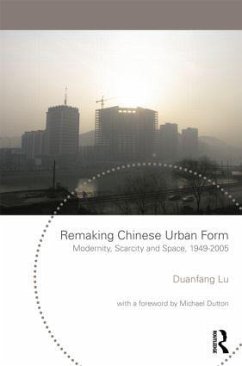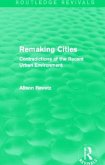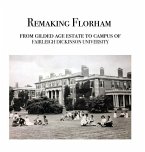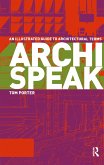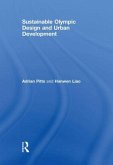This book charts the evolution of the contemporary Chinese urban built environment. Following the socialist revolution of 1949, China's architects and planners attempted to remodel urban settlements according to modern neighborhood design and planning principles. However, the gigantic social upheaval left these attempts unsuccessful. The result was a divided landscape: a modern functional urban world of work units (danwei) - the largely self-contained entities which integrated workplace, housing, and social services - strictly separated from an underdeveloped rural world. Against this background and drawing on urban studies, environmental design history, urban studies, and critical theory, questions of Chinese modernity, nation building, spatial injustice, and urban-rural conflict are explored.
In this pioneering study of contemporary Chinese urban form, Duanfang Lu provides an analysis of how Chinese society constructed itself through the making and remaking of its built environment. She shows that as China's quest for modernity created a perpetual scarcity as both a social reality and a national imagination, the realization of planning ideals was postponed. The work unit - the socialist enterprise or institute - gradually developed from workplace to social institution which integrated work, housing and social services. The Chinese city achieved a unique geography made up in large part of self-contained work units. Remaking Chinese Urban Form provides an important reference for academics and students conducting research on China. It will be a key source for courses on Asia in architecture, urban planning, geography, sociology and anthropology, at both the graduate and undergraduate level. The insightful yet accessible introduction to urban China will also be of interest to architects, urban designers and planners - as well as general audience who wish to learn about contemporary Chinese society.
Hinweis: Dieser Artikel kann nur an eine deutsche Lieferadresse ausgeliefert werden.
In this pioneering study of contemporary Chinese urban form, Duanfang Lu provides an analysis of how Chinese society constructed itself through the making and remaking of its built environment. She shows that as China's quest for modernity created a perpetual scarcity as both a social reality and a national imagination, the realization of planning ideals was postponed. The work unit - the socialist enterprise or institute - gradually developed from workplace to social institution which integrated work, housing and social services. The Chinese city achieved a unique geography made up in large part of self-contained work units. Remaking Chinese Urban Form provides an important reference for academics and students conducting research on China. It will be a key source for courses on Asia in architecture, urban planning, geography, sociology and anthropology, at both the graduate and undergraduate level. The insightful yet accessible introduction to urban China will also be of interest to architects, urban designers and planners - as well as general audience who wish to learn about contemporary Chinese society.
Hinweis: Dieser Artikel kann nur an eine deutsche Lieferadresse ausgeliefert werden.

